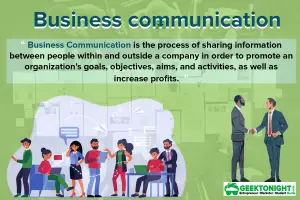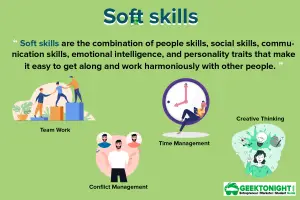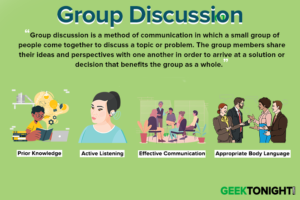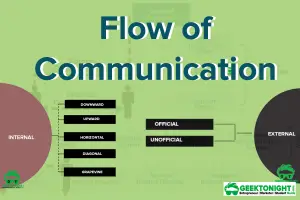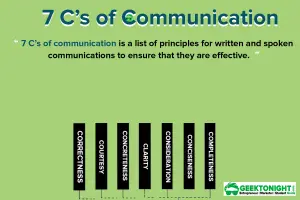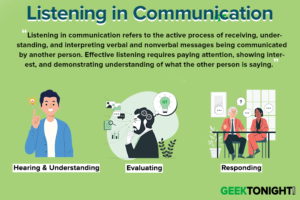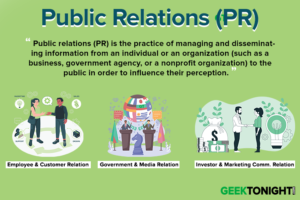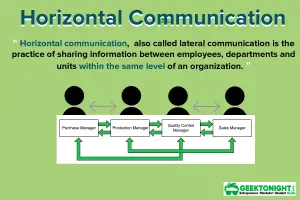Miscommunication occurs when the message received is not the same as the message sent. The causes for miscommunication are many.
Table of Content
Causes of Miscommunication
Some important causes for miscommunication are as under:
- Organizational Structure
- Difference in Status
- Lack of Trust
- Incorrect Choice of Medium
- Closed Communication Climate
- Information Overload
- Message Complexity
- Message Competition
- Unethical Communication
- Physical Distraction
Organizational Structure
Large organizations in general have too many vertical communication links; as a result, the message becomes distorted as they move through the various organizational levels. Regardless of the size, all organizations have communication policies that depict the protocol to be followed. It is the structure and complexity of this protocol that usually gives rise to communication barriers.
To eliminate this, the receiver should be contacted directly rather than through numerous transfer stations. Also, the message should be demonstrated orally as this reduces the dependence on transfer stations. To further overcome structural barriers, opportunities should exist for communicating upward, downward, and horizontally using techniques like employee surveys, open-door policies, newsletters, memos, and task groups.
An effort should be made to cut down hierarchical levels, increase communication coordination between departments, and encourage two-way communication.
Difference in Status
When people belonging to different hierarchical positions communicate with each other, there is a possibility of miscommunication. In general, employees at lower levels of the hierarchy are over cautious while sending messages to managers and talk about subjects they think the managers are interested in.
Similarly, people of higher status may distort the message by rejecting to discuss anything that would tend to weaken their authority in the organization. In other words, they may want to retain the importance of their status. This tendency is beneficial neither for the employees nor for the organization.
Miscommunication growing due to differences in status can be overcome by keeping the managers and the lower-level employees well-informed. Employees should be urged to keep their managers informed by being fair-minded and respectful of their notions. They should be brave and convey even such information that the boss might not like.
Lack of Trust
Establishing credibility or building trust among subordinates or with colleagues is a difficult task. Subordinates may not know whether their manager will respond in a supportive or responsible way, and therefore, it is necessary for the manager to ensure that they have faith in him.
Without trust, free and open communication is effectively blocked, thereby threatening the organization’s stability. You may be very clear in your communication, but that is not enough. People should trust you to accept or to freely discuss with you on what you communicate.
Barriers to trust can be overcome by being visible and accessible. Hiding or insulating behind assistants or secretaries will not help. Share key information with colleagues and employees, communicate honestly, and include employees in decision-making. Creating an open communication environment in the organization, helping employees in times of distress, and assuring them of your suggestion or cooperation may help you to build trust in their minds.
Incorrect Choice of Medium
Choosing an incompatible communication medium can distort the message and block the intended meaning. One should select a medium that suits the nature of the message and the intended recipients. Face-to-face communication is the most fertile medium because it is personal, it provides immediate feedback, transmits information from both verbal and non-verbal cues, and conveys the emotion behind the message.
Telephones and other interactive electronic media are not as effective. Written media can be personalized through memos, letters, and reports, but immediate feedback is missing along with the visual and vocal non-verbal cues that contribute to the meaning of the message. The weakest media are in general impersonal written messages, such as bulletins, fliers, and standard reports. They lack the ability to carry non-verbal cues and to give feedback and also eliminate any personal focus.
The barriers that arise out of an incompatible choice of media can be overcome by choosing the richest media for non-routine, complex messages; using rich media to extend and to humanize your presence to promote the employees commitment to organizational goals, and using leaner media to communicate simple, routine messages.
Closed Communication Climate
An organization’s communication climate is determined by its management style. A direct, authoritarian style blocks free and open exchange of information that characterizes closed communication.
To overcome barriers related to organizational environment, one should spend more time listening than issuing orders. Make sure you react constructively to employees, and, of course, encourage employees and colleagues to offer suggestions, help set goals, participate in solving problems, and help make decisions. See to it that employees are willing to communicate both their problems and views to you openly.
Information Overload
Occasionally, people load their messages with too much information. Remember that too much information is as bad as too little because it dilutes the audience’s ability to concentrate on the most important part of the message. The recipients facing information overload sometimes tend to ignore some of the message, delay responses to messages they deem unimportant, answer only parts of some message, or react only superficially to all messages. All these failures lead to miscommunication.
To overcome information overload, as a sender, be focused, realize that some information is not necessary, and include only the pertinent information. Give some meaning to the information rather than just passing it on. As a receiver, set priorities for dealing with the information flow and do not get trapped in the sea of information.
Message Complexity
There are two main reasons for any message to become complex in a business setting – one, the dry and hard nature of the message itself and the other, the difficulty in understanding it. When formulating business messages, you communicate both as an individual and as a representative of an organization.
Thus, you must adapt your own ideas and style so that they are acceptable to your employer. In fact, at times you may be asked to write or say something that you disagree with personally.
Defeating this barrier can be possible by keeping the message clear and easy to understand, organizing them suitably, leading readers by telling them what to expect, using concrete and specific language, and by being focused. Never forget to ask for feedback, which is essential for clarifying and amending a message.
Message Competition
Constantly, most business messages compete for the full and undivided attention of their receivers. This may occur at two levels – intra-personal and inter-personal. If you are talking on the phone while scanning a report, both messages are likely to get lost. It may occur so that when you are the sender of a message, it may have to compete with a variety of interruptions-phone rings every five minutes, people intrude, meetings are called, and crises arise. In short, your message seldom has the benefit of the receiver’s undivided attention.
Such roadblocks are true for both oral and written messages. Overcoming this barrier can be achieved by making written messages visually attractive and easy to understand, and delivering them when your receiver has time to read them.
Oral messages are most effective when you take recourse to the face-to-face mode of communication rather than resorting to intermediaries or answering machines. Invariably set aside plenty time for important messages that you receive, as you know that the sender and receiver keep changing their role in the communication process.
Unethical Communication
Relationship within and outside the organization depend on trust and fairness. It does not mean that organizations should not be tactful. By all means, it is possible for organizations to avoid illegal or unethical messages and still be believable or successful in the long run. Barriers arising out of unethical conduct may affect communication both within and outside the organization.
Suppose a situation in which your colleague goes to your boss and takes credit for the success of a project, which actually you have accomplished. This example reveals that resorting to unethical means in communication may not drive you to success but to trouble.
Defeating this barrier can be possible by making sure that your messages include all the factual information that ought to be there. Ensure that your information is adequate and relevant to the situation. Above all, make sure that your message is entirely truthful, not deceptive in any way, and does not mislead the audience.
Physical Distraction
Communication barriers are time and again physical: bad connections, poor acoustics, illegible copy, etc. While noise of this sort seems trivial, it can completely block an otherwise effective message. An uneasy chair, poor lighting, or some other irritating condition might also distract your receiver.
In some cases, the barriers may be related to the receiver’s health. Hearing or visual impairment or even a headache can interfere the reception of a message. These irritations do not usually block communication entirely, but they do reduce the receivers’ concentration by distracting their attention.
To overcome physical barriers, exercise as much control as possible over the physical transmission link. If you are delivering an oral presentation, choose a setting that permits the audience to see and hear you without straining. When you are the audience, try to concentrate on the message rather than the distractions. On the other hand, if you are preparing a written document, make sure its appearance or layout suits the message contained in it.
To diminish the possibility of miscommunication, follow these four simple steps:
- Regard seriously the recipients of your message. Make sure that the key people who have to receive the written or oral message are included.
- Think about how to send the message, i.e., should the mode be verbal or written.
- Follow up your verbal message with a written statement.
- At last, decide who can communicate with whom.
Business Communication Notes
(Click on Topic to Read)
- What is Business Communication?
- What is Communication?
- Types of Communication
- 7 C of Communication
- Barriers To Business Communication
- Oral Communication
- Types Of Non Verbal Communication
- What is Written Communication?
- What are Soft Skills?
- Interpersonal vs Intrapersonal communication
- Barriers to Communication
- Importance of Communication Skills
- Listening in Communication
- Causes of Miscommunication
- What is Johari Window?
- What is Presentation?
- Communication Styles
- Channels of Communication
- Hofstede’s Dimensions of Cultural Differences and Benett’s Stages of Intercultural Sensitivity
- Organisational Communication
- Horizontal Communication
- Grapevine Communication
- Downward Communication
- Verbal Communication Skills
- Upward Communication
- Flow of Communication
- What is Emotional Intelligence?
- What is Public Speaking?
- Upward vs Downward Communication
- Internal vs External Communication
- What is Group Discussion?
- What is Interview?
- What is Negotiation?
- What is Digital Communication?
- What is Letter Writing?
- Resume and Covering Letter
- What is Report Writing?
- What is Business Meeting?
- What is Public Relations?
Business Communication Notes
(Click on Topic to Read)
- What is Business Communication?
- What is Communication?
- Types of Communication
- 7 C of Communication
- Barriers To Business Communication
- Oral Communication
- Types Of Non Verbal Communication
- What is Written Communication?
- What are Soft Skills?
- Interpersonal vs Intrapersonal communication
- Barriers to Communication
- Importance of Communication Skills
- Listening in Communication
- Causes of Miscommunication
- What is Johari Window?
- What is Presentation?
- Communication Styles
- Channels of Communication
- Hofstede’s Dimensions of Cultural Differences and Benett’s Stages of Intercultural Sensitivity
- Organisational Communication
- Horizontal Communication
- Grapevine Communication
- Downward Communication
- Verbal Communication Skills
- Upward Communication
- Flow of Communication
- What is Emotional Intelligence?
- What is Public Speaking?
- Upward vs Downward Communication
- Internal vs External Communication
- What is Group Discussion?
- What is Interview?
- What is Negotiation?
- What is Digital Communication?
- What is Letter Writing?
- Resume and Covering Letter
- What is Report Writing?
- What is Business Meeting?
- What is Public Relations?


